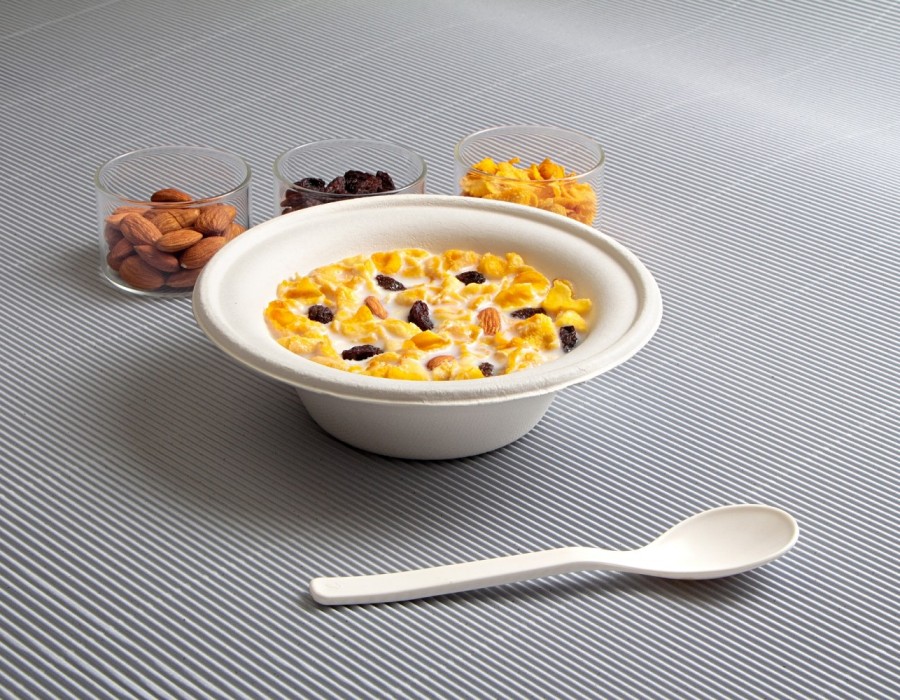Introduction
One of the primary advantages of biodegradable tableware over traditional disposable options is its significantly lower environmental impact. Traditional disposables, primarily made from plastic, contribute to vast amounts of non-biodegradable waste that persist in landfills and oceans for centuries. In contrast, biodegradable tableware is designed to break down naturally within a few months to a couple of years, depending on the material and environmental conditions. This reduces the long-term waste burden and decreases the pollution levels in landfills and marine ecosystems, making biodegradable options a more sustainable choice.
Materials and Manufacturing: From Petroleum to Plants
The materials used in traditional disposable tableware are predominantly derived from petroleum-based plastics, which involve environmentally damaging extraction and refining processes. Biodegradable tableware, on the other hand, is made from renewable resources such as cornstarch, sugarcane bagasse, and bamboo. These plant-based materials not only reduce dependency on fossil fuels but also offer a smaller carbon footprint during their production. Furthermore, the manufacturing process of biodegradable tableware tends to be less energy-intensive and emits fewer greenhouse gases compared to the production of plastic disposables.
Cost Considerations: Initial Investment vs. Long-Term Savings
When comparing costs, traditional disposable tableware is often cheaper upfront due to the established mass production processes and the lower cost of raw materials. However, the hidden costs associated with plastic waste management, environmental cleanup, and potential regulatory fines can make traditional disposables more expensive in the long run. Biodegradable tableware typically has a higher initial cost, but businesses and consumers can benefit from long-term savings through improved sustainability credentials, reduced waste disposal fees, and potential subsidies or incentives for eco-friendly practices. Additionally, as demand for biodegradable products increases, economies of scale are likely to reduce their cost further.
Consumer Preferences: Aligning with Eco-Conscious Values
In recent years, there has been a noticeable shift in consumer preferences towards more sustainable and environmentally friendly products. Many consumers are willing to pay a premium for products that align with their values of sustainability and environmental responsibility. By opting for biodegradable tableware, businesses can cater to this growing demographic of eco-conscious customers. This not only helps in building brand loyalty but also enhances the overall image of the business as a responsible and forward-thinking entity. Traditional disposable options, while still widely used, may increasingly be seen as outdated and environmentally harmful.
Durability and Performance: Meeting Practical Needs
A common concern with biodegradable tableware is whether it can match the durability and performance of traditional disposables. Advances in materials science have led to significant improvements in the strength, heat resistance, and water resistance of biodegradable products. While early versions of biodegradable tableware were prone to breaking down too quickly or not holding up well under certain conditions, modern iterations are designed to be robust and practical for everyday use. In many cases, biodegradable options now rival or even surpass traditional disposables in terms of performance, making them a viable alternative for both consumers and businesses.
In conclusion, while traditional disposable tableware still holds sway due to its lower initial cost and widespread availability, the benefits of switching to biodegradable options are becoming increasingly apparent. From reducing environmental impact to aligning with consumer preferences for sustainability, biodegradable tableware offers a compelling case for adoption. As technology and manufacturing processes continue to advance, the gap between biodegradable and traditional disposables is likely to narrow further, making eco-friendly choices more accessible and appealing to all.





Comments